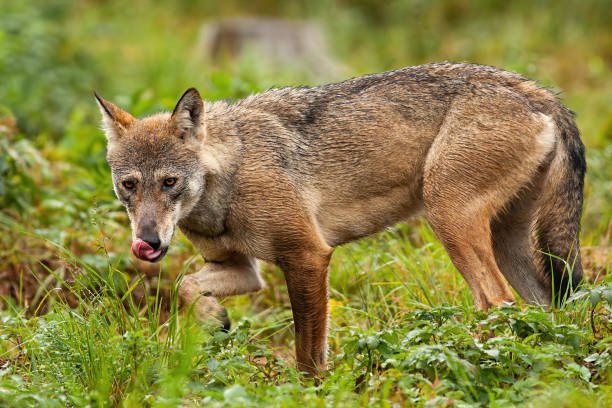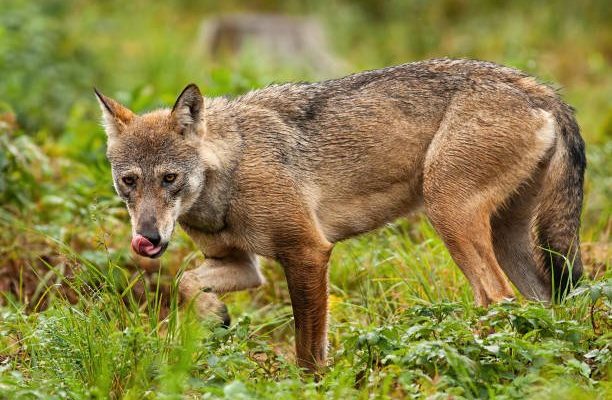
Imagine a group of deer in a sun-dappled meadow, not just munching on grass but also spending time licking each other and scratching at hard-to-reach spots. This is more than just a social activity; it’s a defensive strategy against pesky parasites like wolf worms. These worms can invade the skin of various wild animals, causing discomfort and distress. When examining the grooming habits of these creatures, we see a blend of instinct, behavior, and even a touch of cooperation in the wild.
In this article, we’ll dive deep into the world of wild animal grooming behavior, especially as it relates to wolf worms. We’ll explore how various species respond to these parasites, the importance of grooming, and how these habits influence their health and social interactions. Buckle up for a fascinating journey through the animal kingdom!
The Basics of Wolf Worms: What Are They?
To understand why wild animals groom themselves so diligently, it’s essential to know what **wolf worms** are. These parasitic larvae, scientifically known as *Cuterebra*, typically infect mammals, including deer, rabbits, and domestic pets. They enter their hosts through the skin or open wounds and can cause significant irritation and health issues.
These little invaders can wreak havoc for animals. When larva burrow into their skin, it can lead to swelling and painful sores. In severe cases, untreated infections might require veterinary attention or could even be fatal. This situation is where grooming becomes not just a luxury but a necessity. Animals develop grooming routines that help them alleviate the discomfort caused by these worms, often working together with others in their group to share the burden of hygiene.
You might be wondering why these worms specifically target wild animals. Well, their life cycle is intricately tied to the hosts they invade, and wild creatures often have the right environment and behaviors that allow the worms to thrive. This sets the stage for a fascinating interaction between wildlife and nature’s unwanted guests.
The Role of Grooming in Wild Animal Health
Grooming isn’t just about self-care; it’s crucial for an animal’s overall health. It serves numerous purposes such as removing dirt, parasites, and dead skin. When it comes to wolf worms, grooming plays a pivotal role in minimizing the impact of these invaders.
Animals have a natural instinct to groom, driven by both necessity and behavior. For example, many species, including primates and birds, have evolved complex grooming rituals. These activities help reduce stress, strengthen social bonds, and keep their fur or feathers in tip-top shape.
In the case of wolf worms, grooming can be a group effort. Think about a herd of deer. When one member starts to groom itself, others might join in, creating a social grooming session. This not only enhances their hygiene but also reinforces their social structures. You might notice that animals with stronger social bonds tend to groom each other more frequently, indicating a deep level of trust and cooperation.
How Animals Groom to Combat Wolf Worms
Animals have developed unique strategies to groom themselves, especially when faced with pesky wolf worms. Some might use their mouths or paws to reach those itchy spots, while others might find natural tools like branches or bushes to scratch against.
Consider rabbits, for instance. They are known for their detailed grooming habits. When they sense the presence of wolf worms, you will often see them using their hind legs to scratch their bellies and sides vigorously. This behavior not only helps alleviate irritation but also helps locate any areas where the worms might be hiding.
Bigger animals, like deer, might resort to more complex behavioral strategies. They often enlist the help of their herd. Grooming each other makes it easier to reach hard-to-scratch places and reinforces social bonds. Here, the aha moment is clear: grooming is not just about hygiene; it’s a social activity that helps animals connect and support each other in the face of common threats.
Social Grooming: Beyond Just Hygiene
The notion of **social grooming** goes beyond just cleaning the fur. It plays a fundamental role in the dynamics of animal groups. Animals often groom each other as a way to solidify relationships and establish hierarchy within the group. You might even say it’s their way of building trust through touch.
In the wild, dynamics change quickly, and maintaining social bonds is crucial for survival. When animals groom one another, they’re not just battling parasites. They’re communicating. This touch can signal friendship or even a request for help. When wolf worms are present, the stakes are even higher. By grooming each other, they create a united front against the shared threat of parasites, encouraging more vulnerable members of the group to stay healthy.
Imagine a pride of lions. The females often groom each other. It’s a way of checking for injuries and ensuring each other’s well-being. In this context, if a lioness were dealing with wolf worms, her sisters would likely help her out, both protecting them from a larger threat and reinforcing their bond.
Case Studies: Wild Animals and Their Grooming Habits
Let’s take a closer look at specific wild animals and how they tackle the challenge of wolf worms through grooming.
**1. Deer**: As mentioned earlier, deer are often seen using their antlers and hooves to scratch themselves. Their long legs allow them to reach tricky spots. They will frequently groom each other, especially around the neck and face, where the worms might invade.
**2. Rabbits**: Known for their meticulous grooming, rabbits will often use their front paws to wipe their faces and ears, making it easier to spot any irritation from wolf worms. When they groom together, it’s a bonding experience that helps them monitor each other’s health.
**3. Primates**: Monkeys, especially those in groups, spend a large part of their day grooming. They not only clean but also check for wounds and parasites. This behavior is vital; it helps them stay free of wolf worms and other parasites while also fostering social interactions.
These examples show how different animals have adapted their grooming behaviors to combat the challenges posed by wolf worms, reinforcing the connection between hygiene and social life in the wild.
The Importance of Wild Animal Grooming Behavior for Ecosystems
The grooming habits of wild animals can influence wider ecosystem dynamics. When animals keep themselves healthy through grooming, they help maintain balanced populations of species. For instance, when wolves or deer are free of parasites like wolf worms, they can better contribute to the health of their prey and predator roles in the ecosystem.
Moreover, healthy animals support plant life through their foraging habits, leading to a more balanced habitat. This connection highlights how grooming isn’t just a personal matter; it resonates through the entire environment. When animal populations thrive without the interference of parasites, it creates a healthier ecosystem overall.
You might say that grooming behaviors are nature’s way of creating a support system. Animals that work together to keep each other clean contribute to healthier populations, which in turn affects their entire habitat. It’s a beautiful reminder of how interconnected life is in the wild.
Grooming is more than a grooming act; it’s a complex, essential behavior that enhances the lives of wild animals facing challenges like wolf worms. These small creatures remind us that hygiene matters—not just for aesthetics but for health and community. The intricate dance of animals grooming each other showcases their ability to bond, protect, and thrive together.
As we observe these behaviors, we gain valuable insight into the natural world and the survival strategies employed by different species. It’s a testament to the resilience of wildlife and a reminder of how interconnected we all are in the great web of life. So, the next time you see animals grooming, remember the incredible importance of those moments, not just for cleanliness, but for their very survival.

